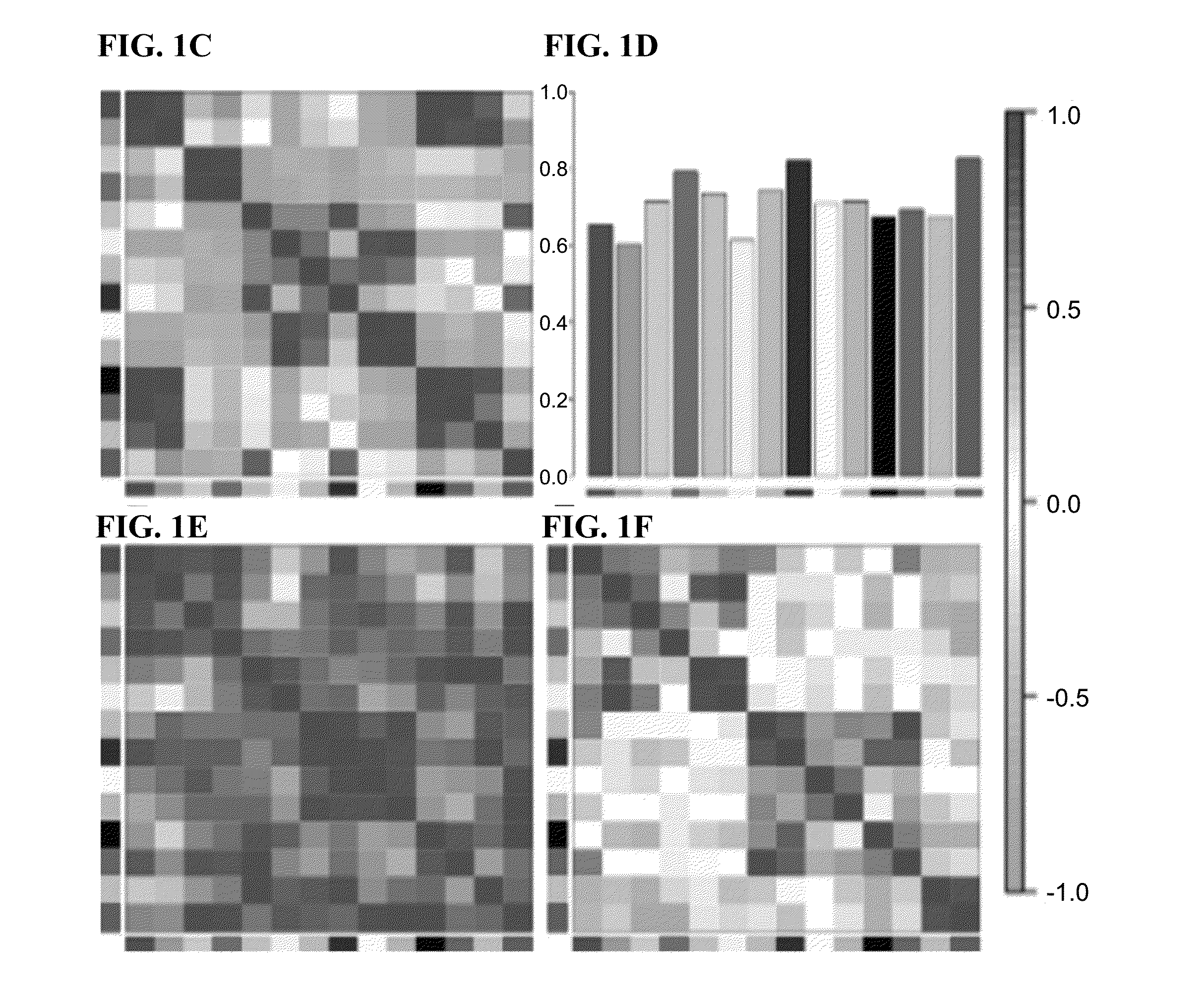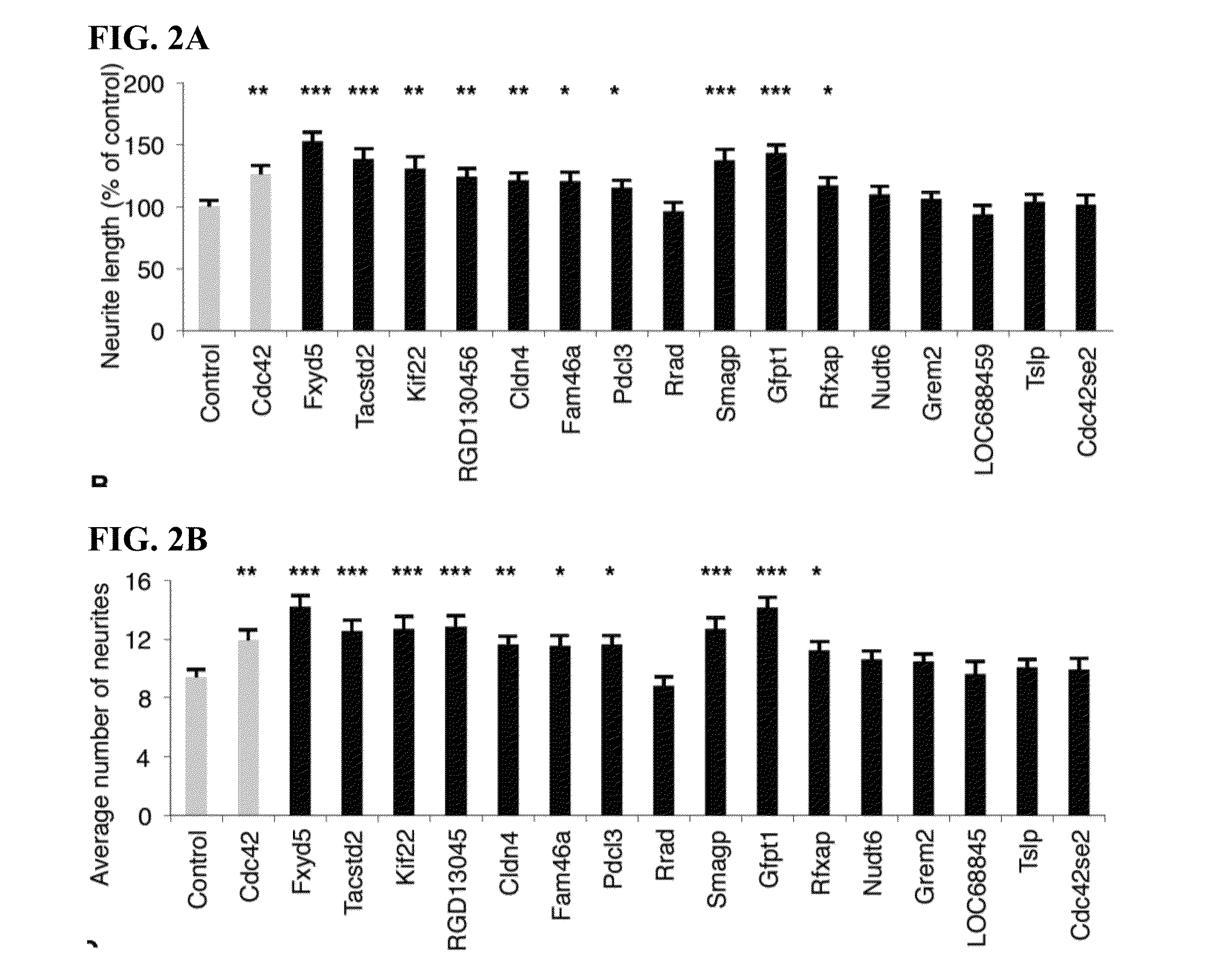Neuronal regeneration
- Summary
- Abstract
- Description
- Claims
- Application Information
AI Technical Summary
Benefits of technology
Problems solved by technology
Method used
Image
Examples
example 1
Identifying Intrinsic Molecular Factors
[0100]Identifying the various intrinsic molecular factors / signals controlling regeneration of axons in PNS injury models would significantly advance our understanding of neuronal regenerative mechanism and pathways accounting for the differences in the regenerative capacity of PNS and CNS neurons, permitting us to identify the key differences that underlie the non-regenerative state of the CNS and potentially accelerate PNS recovery as well. Several over-expression and knockout studies of candidate genes has provided evidence for minimal but not complete recovery after CNS injury (Kevin Kyungsuk Park et al. 2008; P. D. Smith et al. 2009; Sun et al. 2011; Liu et al. 2010), demonstrating the presences of differences in neuronal growth states between PNS and CNS injury. Elucidating the in vivo molecular state during PNS injury and recovery in recapitulating this molecular state in the CNS after injury would be an effective approach to better under...
example 2
Identification of Activities of RAGs
[0132]The current models for genetic manipulation for robust regeneration of injured corticospinal tract (CST) axons are limited to gene deletion models (Sun et al., 2011). CNS. To address this, several small molecules currently used in the clinical trials for other purposes or indications have been identified to activate RAGs herein. Indeed, these compounds inhibit proteins and genes known to repress RAGs. Herein, two proteins, PTEN and SOCS2, when inhibited, were identified to activate the core regeneration associated network. Thus effectively targeting the signaling networks responsible for central and peripheral regeneration, identifies target compounds that enhance significant level of CNS regeneration in optic nerve crush mice model.
[0133]A series of compounds were investigated and four (4) compounds were discovered as either PTEN inhibitors or SOCS3 inhibitor. Luteolin, and quercetin were discovered as PTEN inhibitors. Genistein and phentol...
example 3
Ambroxol Enhances CNS Regeneration In Vivo
[0147]Another prediction from our network analyses is that appropriate co-regulation of the core regeneration associated module, M280, which does not normally occur in CNS injury, might augment CNS regeneration. Without wishing to be bound by any theory, since ambroxol recapitulates many of the core expression changes in the M280, we reasoned that it would promote CNS regeneration. Optic nerve (ON) regeneration has become a standard model for CNS regeneration [Sun et al., 2011], so we examined ON regeneration in C57BL / 6 mice after a crush injury following treatment with ambroxol (Experimental Procedures). We observed limited but significant increase in axon regeneration beyond the site of the lesion (>1.5 fold increase between 200-500 um; p-value less than 0.04) after 2 weeks in animals treated with ambroxol compared with control animals, confirming the predictive properties of the approach. Next we hypothesized that, ambroxol combined with ...
PUM
 Login to View More
Login to View More Abstract
Description
Claims
Application Information
 Login to View More
Login to View More - R&D
- Intellectual Property
- Life Sciences
- Materials
- Tech Scout
- Unparalleled Data Quality
- Higher Quality Content
- 60% Fewer Hallucinations
Browse by: Latest US Patents, China's latest patents, Technical Efficacy Thesaurus, Application Domain, Technology Topic, Popular Technical Reports.
© 2025 PatSnap. All rights reserved.Legal|Privacy policy|Modern Slavery Act Transparency Statement|Sitemap|About US| Contact US: help@patsnap.com



